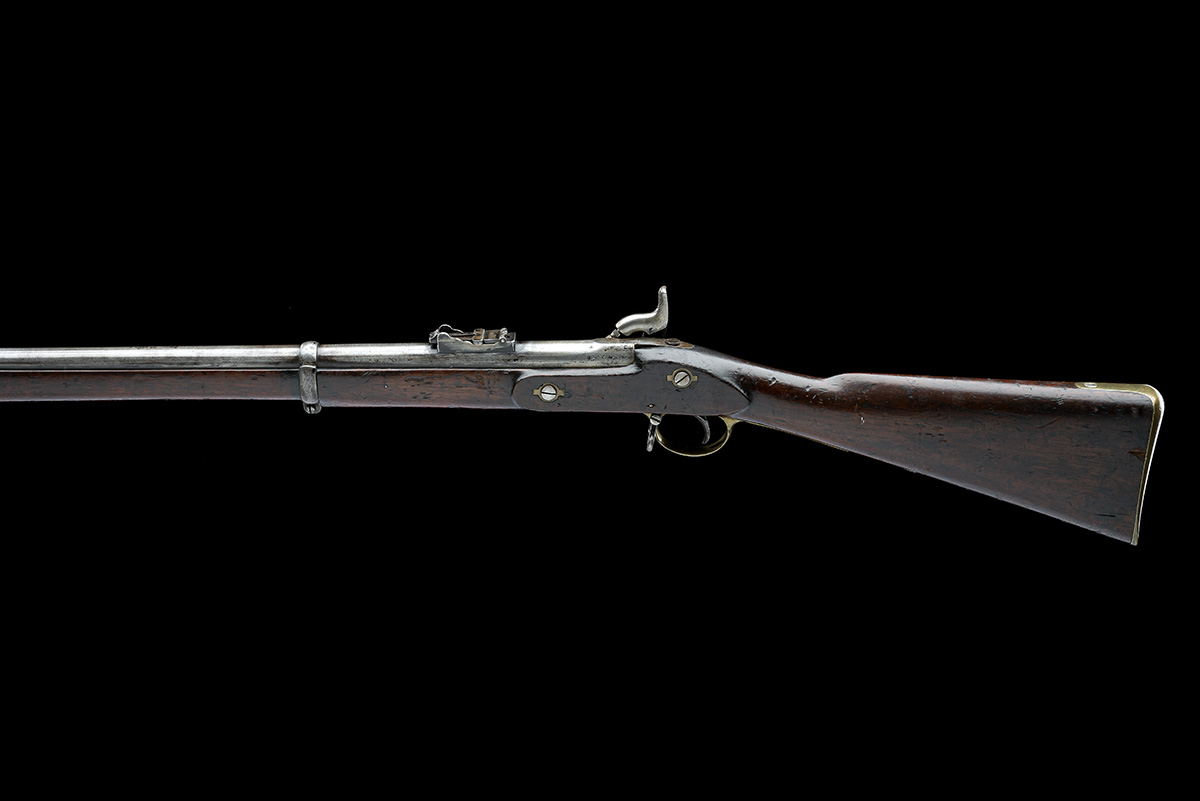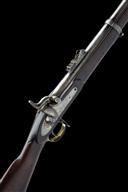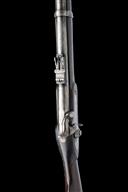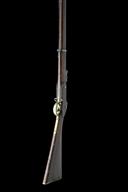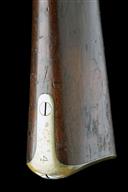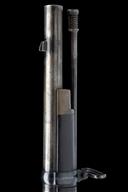Product Details
A EXCEPTIONALLY RARE .577 LANCASTER OVAL BORE 3-BAND GOVERNMENT TRIALS RIFLE , EX-ENFIELD PATTERN ROOM COLLECTION, CIRCA 1862, No. 4,
with 39in. barrel with elliptical or oval bore gain twist rifling, the pitch increasing from 36in. at the breech to 33in. at the muzzle, the major axis of the bore is .580in. and the minor .572in., the rifling specifications closely follows that of the Lancaster Royal Engineers carbine except there is a slight reduction in calibre to suit the new Service .55in. bullet, the rifle is fitted with the usual military pattern block and blade foresight and ladder rear-sight, the barrel is engraved '151 NEW BOND ST. LONDON' to the front of the rear-sight and stamped with London proofs at the breech and 'LANCASTER'S PATENT', the lock is the standard P53 pattern with borderline engraving and the makers name 'C. LANCASTER' to the centre, regulation brass mounted full walnut stock the underside of the butt is stamped '97' and the white painted collection inventory number '629', the butt-cap is engraved '4', the rifle is complete with its sling swivels and correct pattern rod
Provenance: This rare and fully provenanced rifle was one of just five experimental Lancaster rifles built on the lines of the standard P53 service rifle with the rifling form of the Lancaster oval bore system, each of these rifles was numbered 1 to 5. During the development stages in 1853 of the rifle that was to become the Enfield P53, the most promising contender for the rifling form was the Lancaster oval bore but for various reasons it was rejected in favour of the Enfield developed 3 groove 1 turn in 78in. rifling form. Lancaster's disappointment was somewhat offset by the decision of the royal Engineers to adopt his barrel for their new carbine. In due course it was discovered that the P53 rifling system was the least efficient of what could have been adopted. Consequently Charles Lancaster was given another opportunity to demonstrate to the War Department the merits of his rifling system and that it deserved adoption. In 1861 he was asked to submit five oval bore rifles to compete in trials under the auspices of the Enfield and Whitworth Committee, and this rifle is one of the five. The Committee exhaustively tested these five oval bore rifles, their report being published in November 1862 and concluded that as regards accuracy, whether clean or fouled the Lancaster was decidedly the best arm. They also found it was much less liable to foul and easier to clean. There can be little doubt this system would have been adopted to replace the Enfield but for the dramatic advancements in small arms concepts then taking place, the swing to small bore and the growing interest in breech-loading. This rifle was one of two, the other being No 5 held at the Enfield Pattern Room Collection, it was traded out of the Pattern room in 1983 in exchange for a rifle designed by and once owned by Field Marshall George Hay, 8th Marquis of Tweedale, the current vendor acquired in in 1983
Please click HERE to view Terms & Conditions. Please note all Lots are listed in accordance with UK Law, for overseas buyers, please ensure you are familiar with your relevant local firearms and customs regulations before bidding.
Estimate £1,500-2,000

